Last post I had just crossed into New Mexico, headed east. I was in the Gila National Forest, a mountainous wooded area. One day I had to climb up to Emory Pass, at 8,228 feet, which took me about 4 hours. Nice views but on the way down it started raining, which is never fun. So I am zooming down hairpin curves at 30 mph with rain biting into my face and obscuring my vision. No guard rails and 100 foot cliffs on one side. Exhilarating I think is the word I would use to describe it. But also fear, thinking the rain will get worse, or I will slip and my bike will slide off the precipice. Gotta love bike touring; you live on the edge sometimes, literally. Here is the road on the way up to Emory Pass.

At the pass.
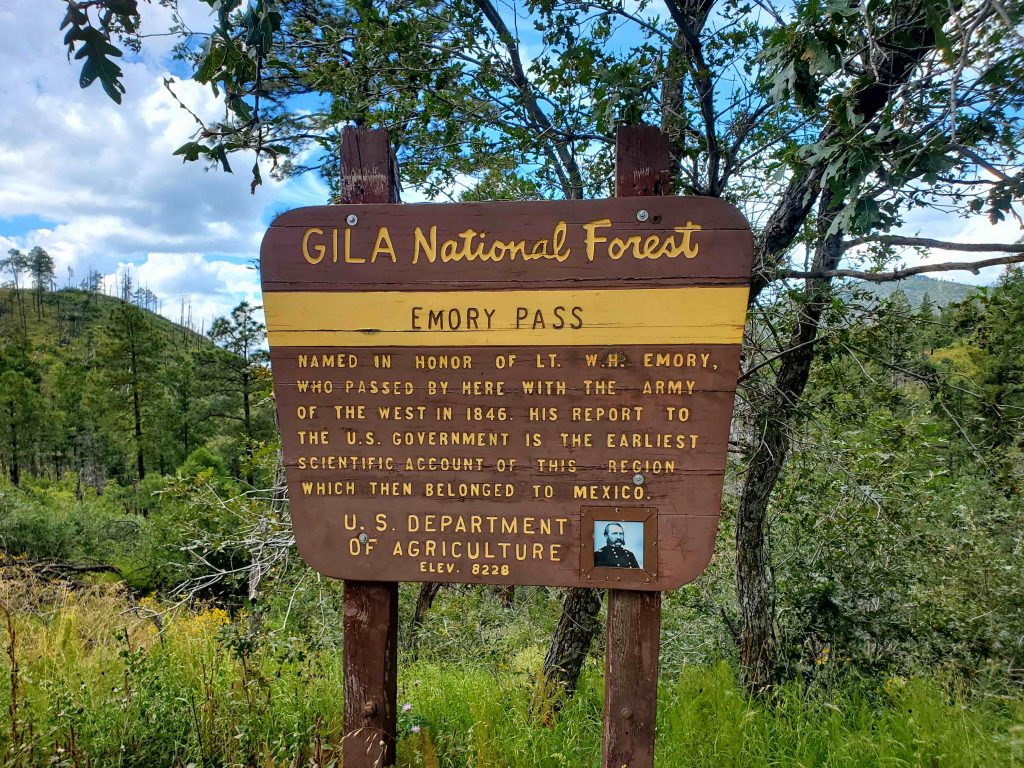
But I survived the downhill which lasted for about 30 minutes and got to Hillsboro where I found a motel and dried off. Nice place, friendly people. By the way, just as I pulled into town a siren was going off and an ambulance raced by. I asked some locals what was going on and they said a motorcycle had skidded off the mountain road I was just on and had fallen into the ravine. No word on the accident victim but it shows how dangerous the road was in the rain.
Once out of the mountains I enjoyed a nice downhill through rolling hills.
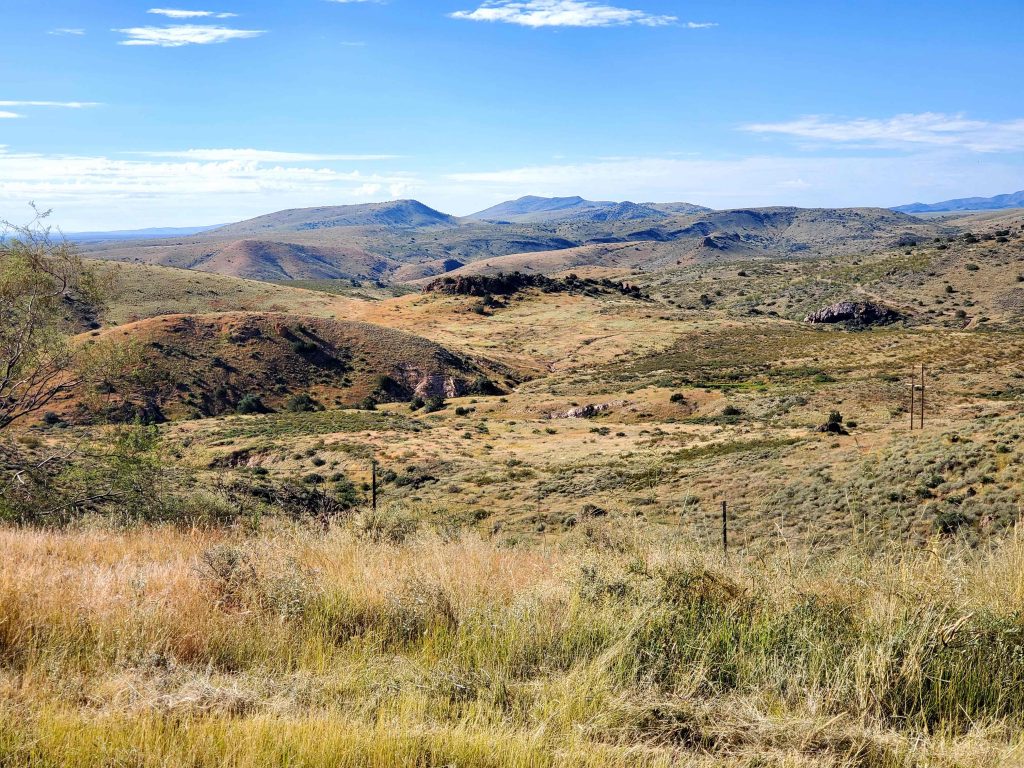
As I approached the town of Hatch I started seeing a lot of pecans orchards, a big crop around here I guess.
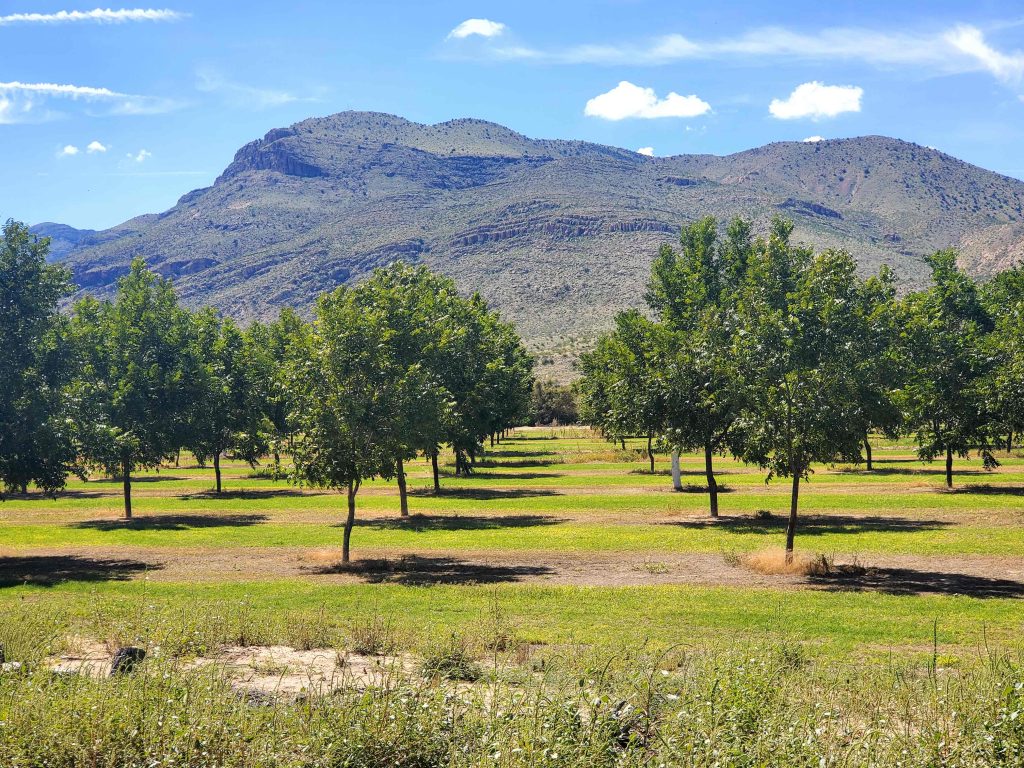
I crossed the Rio Grande river, somewhat dry here in New Mexico.
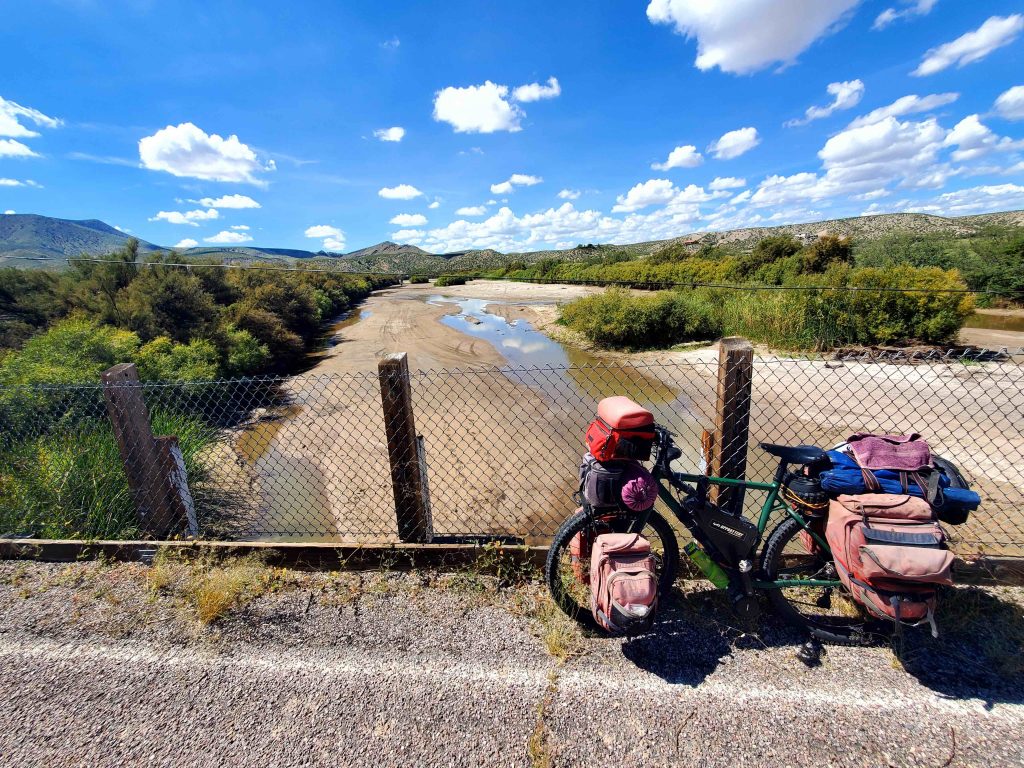
My campsite near Hatch.
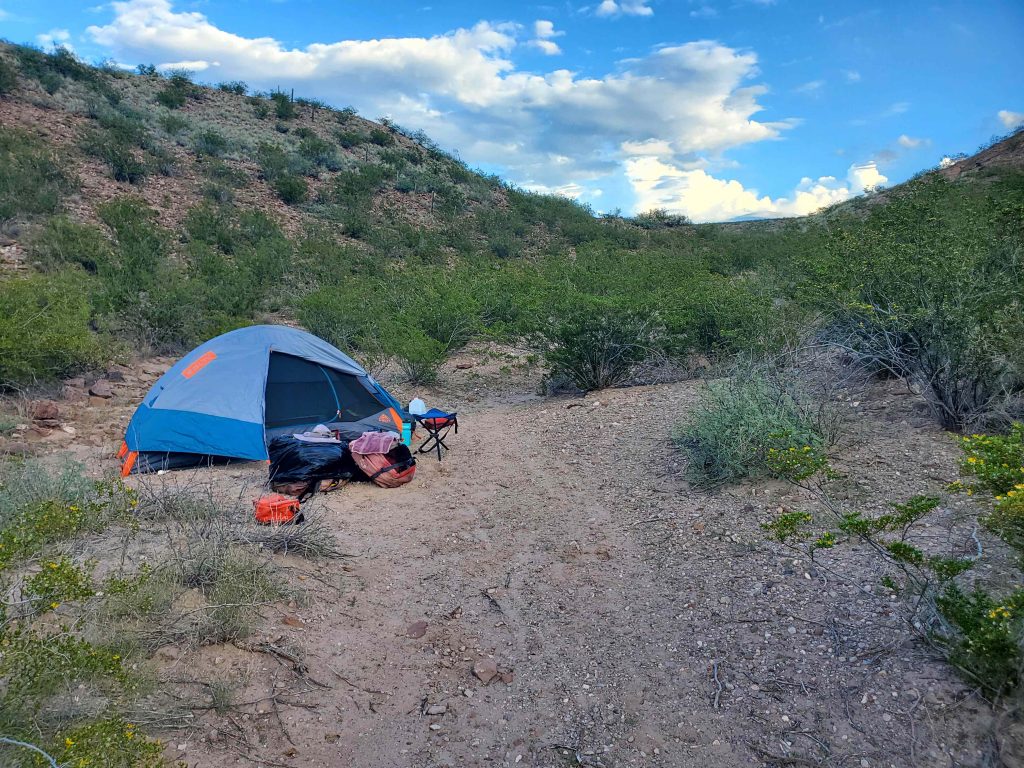
Hatch is famous for its chilis, and I started seeing farms where they grow them.
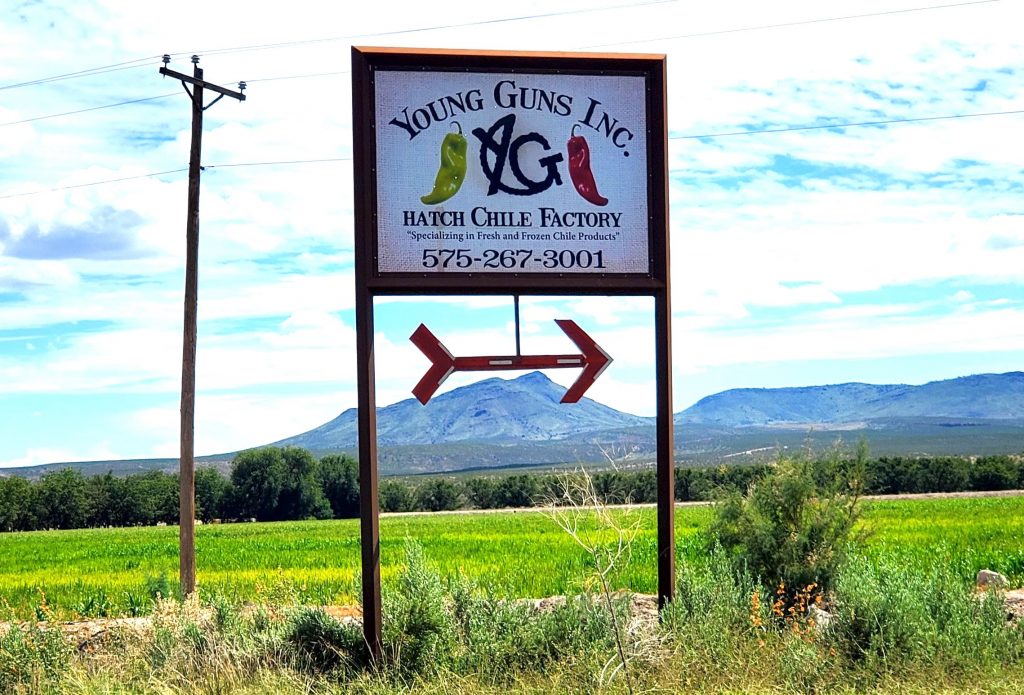
Hatch chili market. I would have bought some, but why?
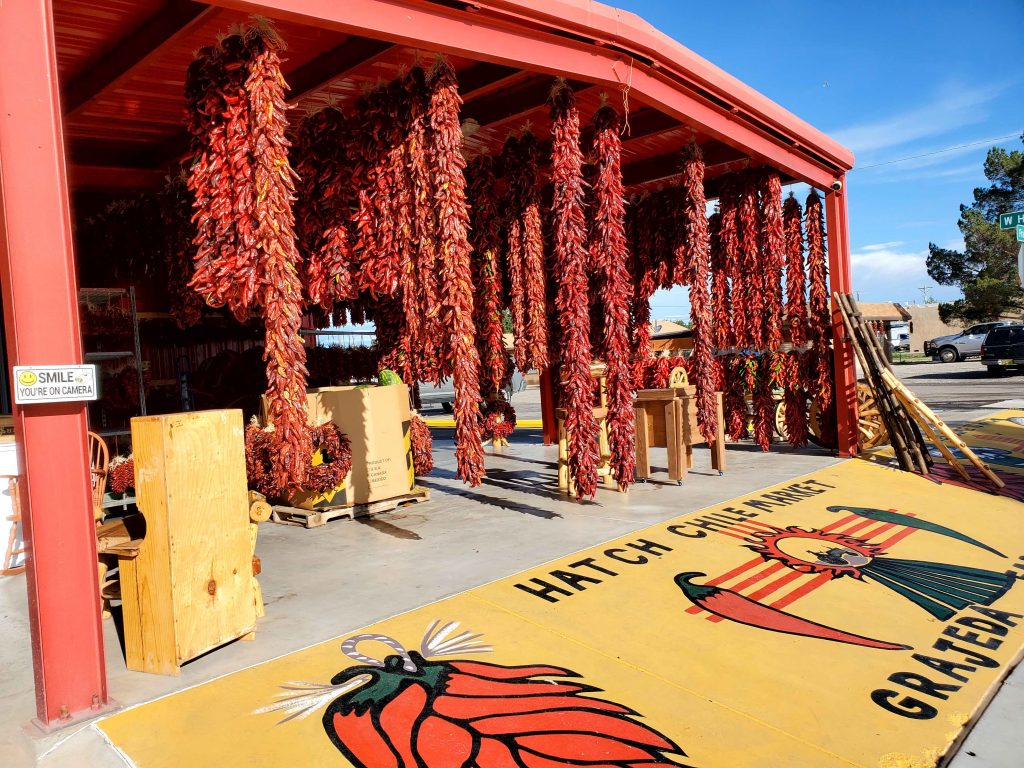
Here are some workers roasting the chilis. It smelled intense.
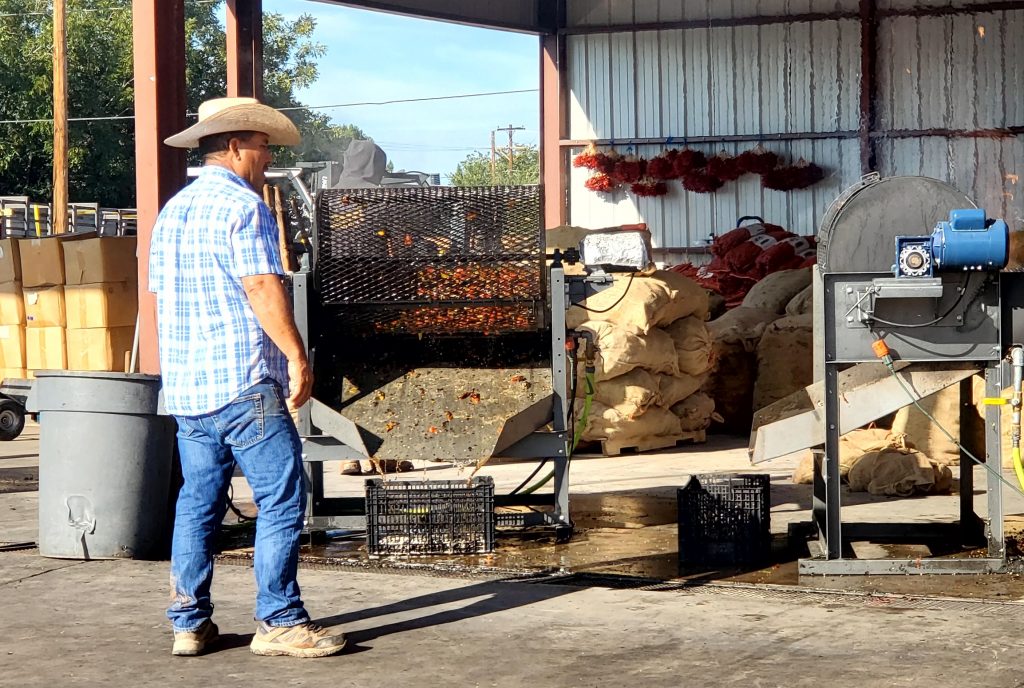
After Hatch I rode through Las Cruces, where I encountered some weird folks. One guy was eyeing my bike while I was in a convenience store, so I hustled out and rode away. Then a car pulled up with two young guys in it and they warned me to be careful, as there were a lot of dangerous people in Las Cruces.
So I stayed only one night there. leaving the city I had a long hill to climb.
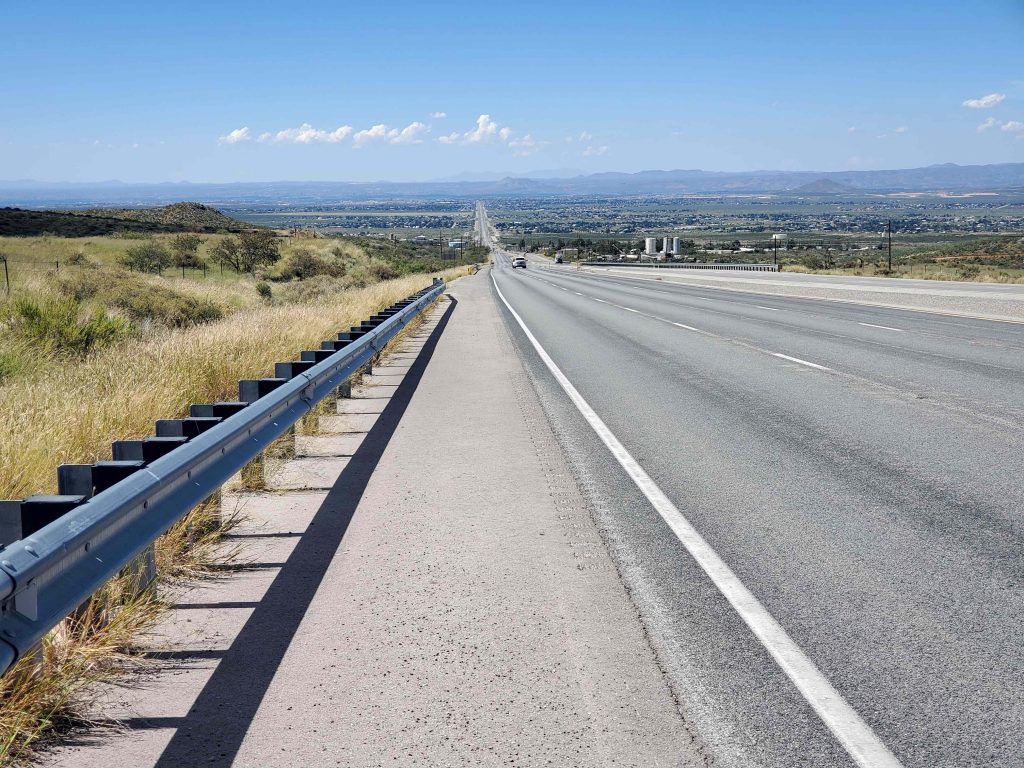
I finally made it past White Sands Area where I camped next to Holloway Air Force base and had to listen to jets screaming by all evening. I won’t get into my thoughts of the billions of dollars we spend on the military but suffice it to say I do not agree with the policy.
Then after a long 62 mile day I made it to Almagordo. Here I am taking a rest break in a park before checking into my motel.
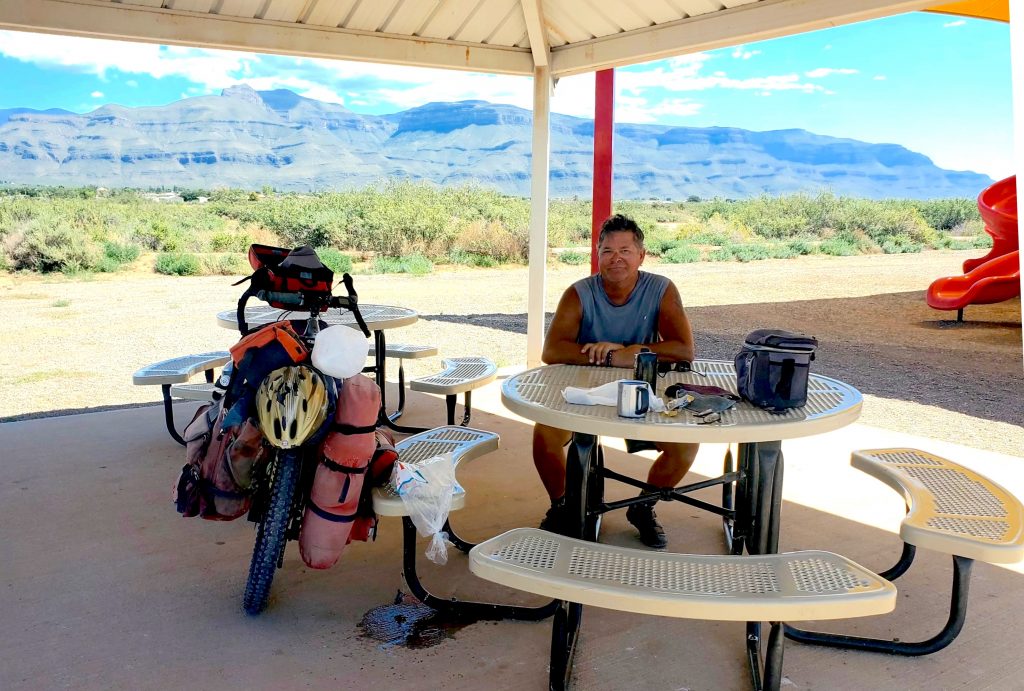
After Almagordo I had the roughest four days of this trip. I was on a highway for 30 miles at first, which wasn’t bad, but then I turned off on county road 506, which I knew was not paved but looked OK on google street view. Well, it was OK at first but got increasing bad. Here is a good section of the road.
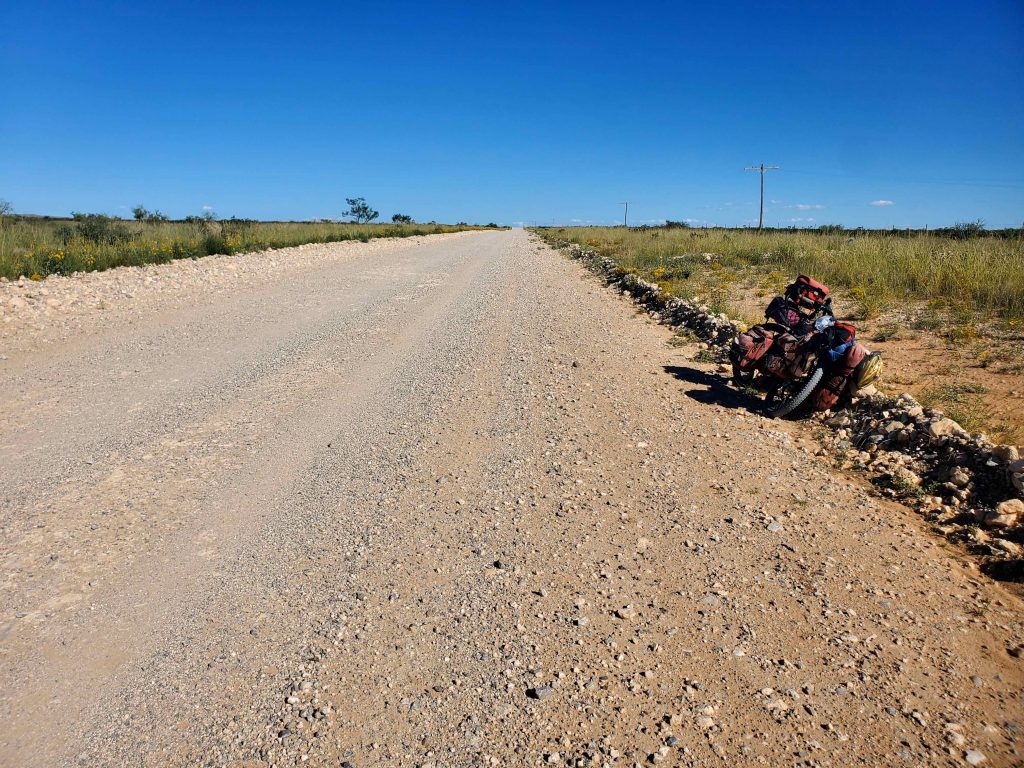
There was not a lot traffic but when I truck did go by it threw up a huge amount of dust so I had to stop and put on my mask every time a car went by–not fun. That night I made it to this campground, after 45 miles of riding.
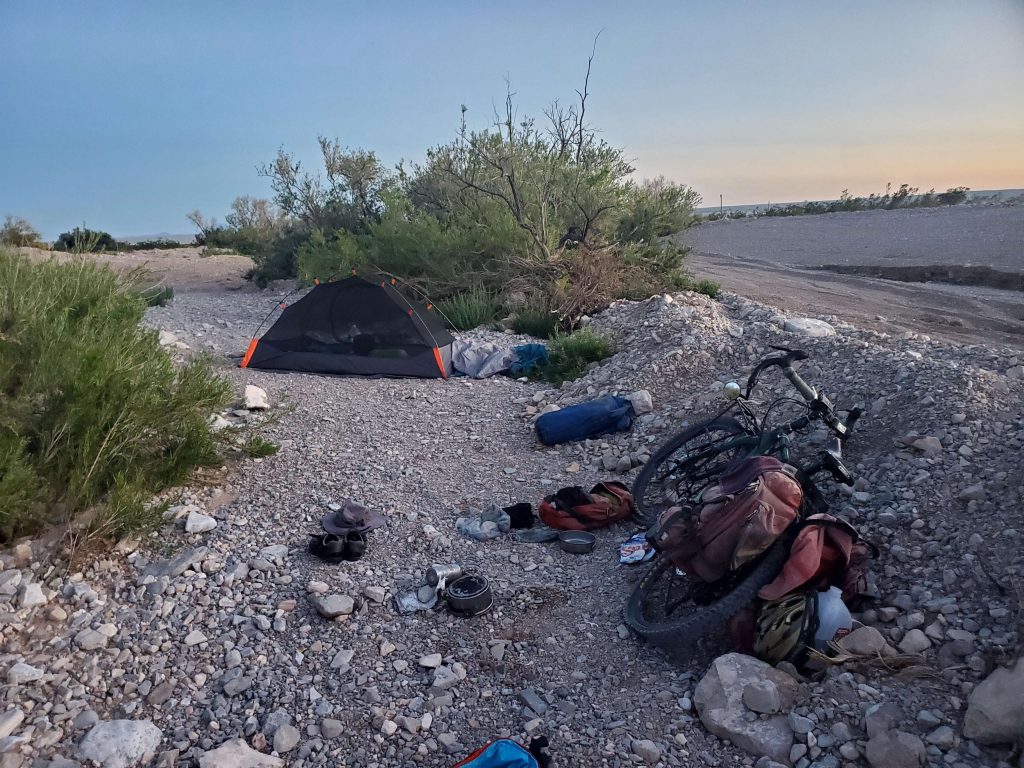
Cracked Rim!
The next day things got really weird. As I was having my morning coffee I noticed my rear tire was completely deflated. I inspected it and found nothing amiss, so I assumed it was just low on sealant. Remember these are tubeless tires. They do not have a tube, but rather sealant which flows into a leak and plugs it. They work remarkably well. So I added sealant and inflated the tire, so far so good. But ten minutes later I checked the tire and it was flat again! Baffled, I could only assume that it needed more sealant. So I added more and started to inflate the tire again. At some point I noticed that sealant was leaking out through the rim, which was not possible. Upon closer inspection I saw that the rim was cracked! Sealant was seeping out through the crack. I could not believe it. I had never had this kind of failure in 40 years of bike touring. I checked the rim and found at least a dozen cracks around the holes where the spoke nipples fit into the rim.

At first I thought, that’s it. I have to hitchhike to get to a town where I can get a new rim. But then I realized it is a tubeless tire, but it can also be used with a tube. I carried one tube with me just in case I could not go tubeless for some reason. If I put a tube in, the crack would not leak air. So that’s what I did. I put in the tube and inflated the tire and it worked! I was good to go. Now, the cracked rim is still a problem. It might fail completely at any point, which would be catastrophic. But I was in the middle of nowhere and had to move forward. There was very little traffic on this road so I could not rely on passing cars to assist me. I also only had water for a day, so I had to get to the next town abut 25 miles away. But the road was awful: rocks, sand, washboard and steep hills. I had to walk my bike several times until I got to a pass where the road descended.
I was actually starting to think I may need to use my Personal Locator Beacon, which I bought for my boat in case I fell overboard. I took it on this trip in the event I was stuck in a remote area with no cell phone signal.
When you activate a PLB, it transmits a powerful distress signal that’s received by a global system of satellites. In the U.S., those distress signals are monitored by NOAA (National Oceanic and Atmospheric Administration).
After receiving your transmission, the satellite system relays your distress call to a network of response agencies, which ultimately results in your plea for assistance reaching a local search and rescue organization. PLBs also utilize another satellite network to get a location fix. In addition, most PLBs today can provide rescuers with GPS-provided coordinates to pinpoint your location even more precisely.
Since there was no vehicle traffic, no cell phone signal and I had a damaged bike and limited water, if I could not travel I thought I may have to activate the PLB and get rescued.
But fortunately the cracked rim stayed together, despite taking a beating from a very rocky road all day. I was able to limp into the minuscule village of Pinon, where I got to a store 30 minutes before it closed and refilled my water bottles. I was completely exhausted and slept like the dead that night. I was beginning to have some hope that I could get to large town and figure out something. But all this time I had no cell phone signal so I could not communicate with anyone.
The next day was tough too with a 20 mph headwind and uphill. Even with my helper I was struggling along at 5 mph. I finally had to quit after 25 miles and 7 hours, camping in a cow pasture where it rained all night. Not a great day. Then I had another tough day getting to the larger town of Artesia. Even though it was 2000 feet down hill I had more headwinds and 50 miles of road. After four hard days of riding and three nights camping I got a motel and slept great. I had to take a rest day to recover and do laundry, respond to emails and figure out what to do with my rim.
The good news it that the heat of the summer has passed and it is nice 70-80 degrees now. I am still paranoid and get ice but it is not nearly as hot as a month ago.
Flash floods are serious here. I have not experienced one but I have seen the aftermath. Many roads have signs like this, showing water depth during a storm. You do not want to mess with a flash flood.
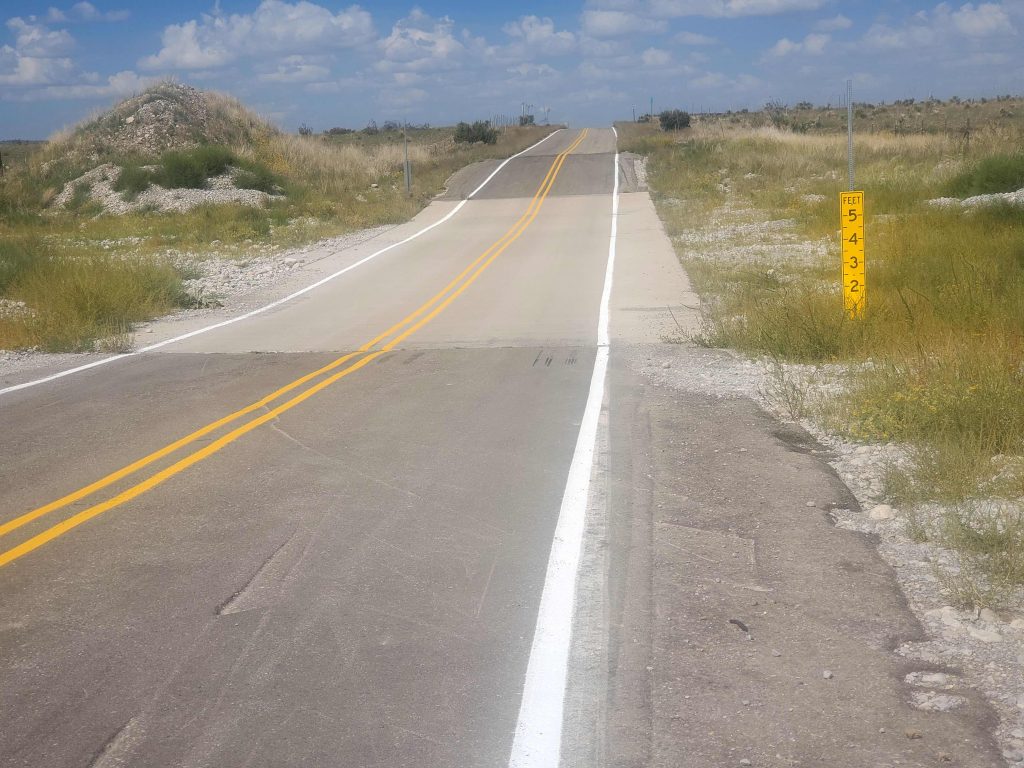
So I managed to contact the place where I bought the wheel with the cracked rim. They contacted the manufacturer and it turns out the rim is under warranty, so they just sent me another one. I paid for next day shipment, which cost an arm and a leg, but I did not want to ride any further on that rim and did not want to sit around for four days. But I have never changed out a rim before and don’t have any of the equipment or tools, so I rode 40 miles to the larger town of Carlsbad, where there was a bike shop. They could do the swap, but their mechanic was taking a four day weekend and would not be back until Tuesday. So I decided to just try it myself. I watched a couple youtube videos and it’s not that difficult. It took me several hours and I made a few mistakes but as of now the wheel is working. Truing a wheel is a lot more difficult than it may seem. You have to tighten and loosen specific spokes to get the wheel not only straight side to side but up and down as well, so it is not oval shaped. Then you have to make sure the dish is correct. That is, the wheel is centered in the middle of the bike. All this takes hundreds of spoke adjustments, and I do not have the special equipment and tools that bike shops have.
So as of now I will leave Carlsbad tomorrow and hope the wheel stays together. Weather looks good, and the big hills are behind me. I should be in Texas in a day or two. Here is my route so far:
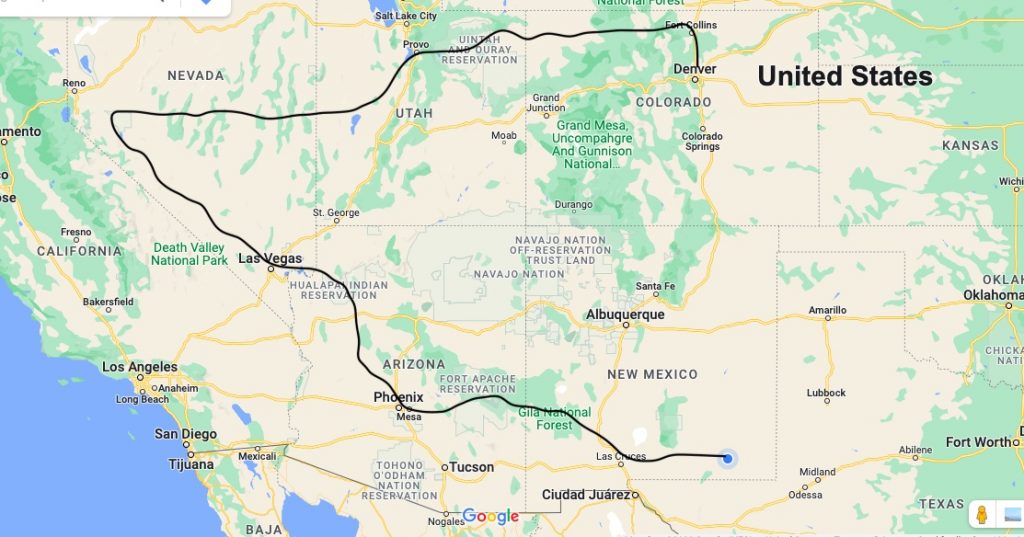
Stay tuned!